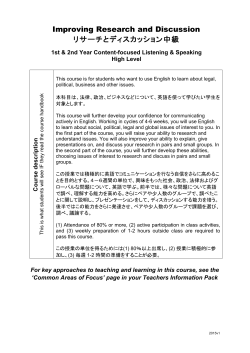
SOLAR CYCLES â TO UPDATING BASIC PARAMETERS
Odessa Astronomical Publications, vol. 27/1 (2014) 15 SOLAR CYCLES – TO UPDATING BASIC PARAMETERS M. I. Ryabov Odessa observatory “Uran-4” of Radio astronomical Institute NANU ryabov-uran@ukr.net ABSTRACT. Examining daily and monthly averages of solar activity index of the northern and southern hemispheres on the total area of spots-Sp (12-24 cycles, 18742014), the Wolf numbers-W (22-24 cycles, 1992-2014). Application of band pass filtering based on Wavelet analysis shows that «Northern» and «Southern» cycles have their own start time, rise phase, the phases of decline, maximum and minimum. The formation of each cycle on all indices of activity is determined as a result of the combined effect of the long-period and shortperiodic processes. Introduction This paper continues the cycle of studies [1-3] of the properties of "Northern" and "Southern" cycles of activity according to daily and monthly average values of indexes of summary area sunspots groups -Sp, and Wolf numbers – W. In the paper [1] we show a significant difference in the dynamics of the development of Northern and Southern hemispheres on the smoothed values space groups of spots for 12-23 cycles of activity. Based on the application of wavelet analysis we identified extended "periods" and power global spectra of the power of the activity of the northern and southern hemispheres for the daily index values of Sp and W in the 23rd cycle of solar activity [2-3]. Method of data analysis Method of application of an expanded version of wavelet analysis is described in [2]. On the basis of data obtained with the use of band-pass Wavelet filter we defined the regularities of the “11-year” cycle, cycles of average length (1-7 years) and periods of less than a year. Results of the investigation Allocation of 11-year-old "Northern" and "Southern" cycles of activity allows to determine their minima, maxima, phases of rise and fall , and cycles duration . General view of the cycles is presented in Figure 1, and the numerical results in Table 1. Figure 1: The dynamics of the "11-year" cycles of Northern and Southern hemispheres of the Sun. 16 Odessa Astronomical Publications, vol. 27/1 (2014) Table 1 (advanced cycles of activity are shown in bold) Cycle 12 13 14 15 16 17 18 19 20 21 22 23 24 N min 1878,17 1888,83 1900,58 1912,25 1922,92 1933,33 1943,67 1953,83 1963,83 1974,92 1985,67 1995,92 2006,83 N max 1883,50 1894,25 1906,00 1917,58 1928,17 1938,50 1948,83 1958,83 1969,17 1980,50 1990,75 2001,25 2012,50 Long. N cycle 10,66 11,75 11,67 10,67 10,41 10,34 10,16 10,00 11,09 10,75 10,25 10,91 According to the reviewed data, duration of the "N" cycles varies in the range from 10 up to 11.75 years, and S cycles from 9.92 to 12.67 years. The 11-year cycle is the dominant period. Considering it as a trend and the removal of original data using the filtering method, it allows to determine the dynamics of development of average length and short periods. The result of filtering for each hemisphere is shown in Figure 2. From Fig. 2 you can see that in the northern hemisphere there is a merger and separation of periods ranging from S min 1878,84 1889,04 1900,54 1913,09 1923,21 1933,17 1943,29 1953,25 1963,50 1976,17 1986,08 1996,13 2007,92 S max 1883,92 1894,25 1907,42 1918,29 1928,09 1938,17 1948,25 1958,21 1970,08 1981,29 1991,00 2001,79 2013,04 Long. S cycle 10,21 11,50 12,54 10,12 9,96 10,12 9,96 10,25 12,67 9,92 10,04 11,79 1 to 5 years. Activity maximum in the 19th cycle of activity. At the same time in the southern hemisphere local area of increased activity dominates, with a maximum gain of its manifestation in 18-cycle activity. The original dynamics is illustrated by the results of Fourier filtering strip for periods of 3-5 years in the northern hemisphere and 4-7 years in the South. Periods of "pitching" the data intervals in the northern hemisphere 15-22 cycles of activity (see Figure 3) and in the southern hemisphere in 18-20 cycles can be observed. Figure 2: Wavelet spectra of N and S of the hemispheres of the Sun when the 11-year "cycle include Odessa Astronomical Publications, vol. 27/1 (2014) 17 Figure 3: Dynamics of development of the activity periods (3-5 years) for Northern and (4-7 years) for Southern hemispheres of the Sun Figure 4: Dynamics of development of the activity periods (2-2.7 years) for Northern and (1.1-3.4 years) for Southern hemispheres of the Sun At the same time, considering the dynamics of shorter periods in the Northern hemisphere (1.2-2.7 years), and in Southern (1.1-3.4 years) correspond more to show activity during periods of growth, peak and off-peak with different ratios of amplitudes (see Figure 4). Conclusion The formation of each cycle on all indices of activity is determined as a result of the combined effect of the longperiod and short-periodic processes. Presented processes in the transition from cycle to cycle show merger, separation, modulation, and recurrent decay. Manifestation of abnormal activity in the rise phase, peak and decline cycle is formed by both intensifying objects in the processes, time and "Spectra periods" which are markedly different in the northern and southern hemispheres. Time intervals of activity in the northern and southern hemispheres are significantly different. The main conclusion is that the study of nature and development of the solar cycle modelling can be justified only on the basis of consideration of the activity of the northern and southern hemispheres particularly including their interaction while forming the global activity complexes. Reference 1. Ryabov M.I. et al.: 2009, Cycles activity on the Sun and stars, 121. 2. Ryabov M.I. et al.: 2013, Solar and solar-Earth connections physics, 235. 3. Ryabov M.I. et al.: 2013, Odessa Astron. Publ., 26/2, 276.
© Copyright 2025








